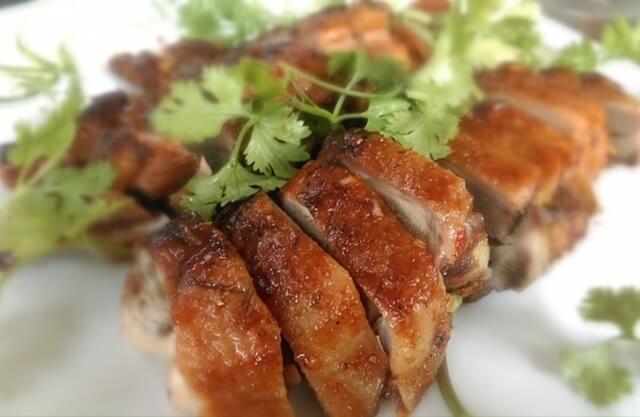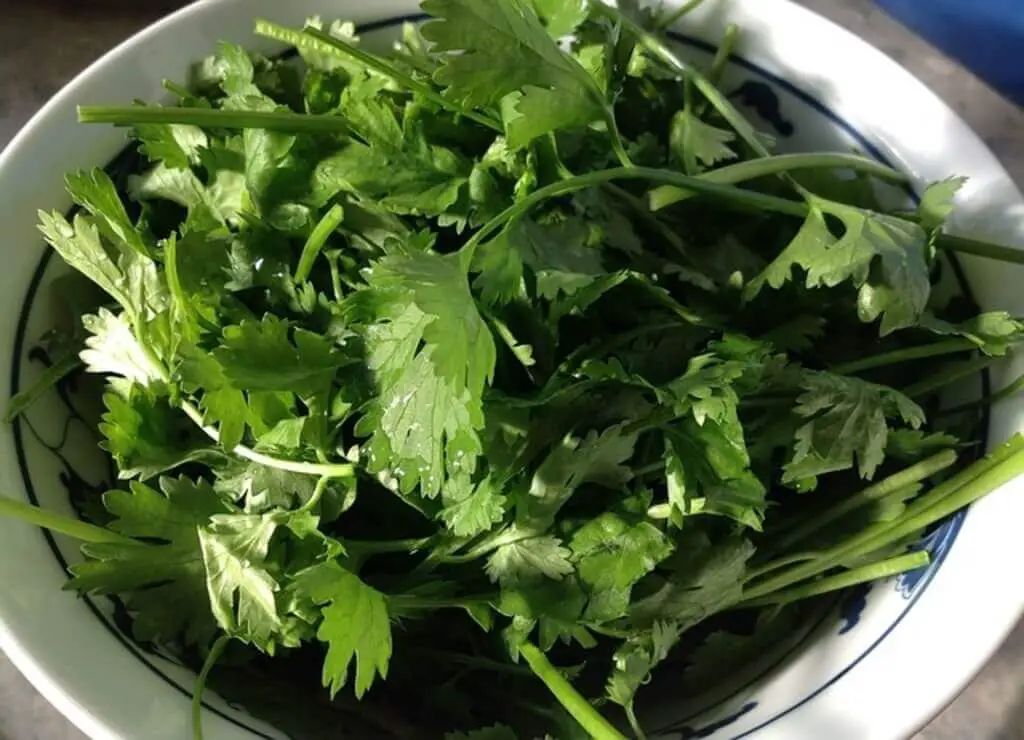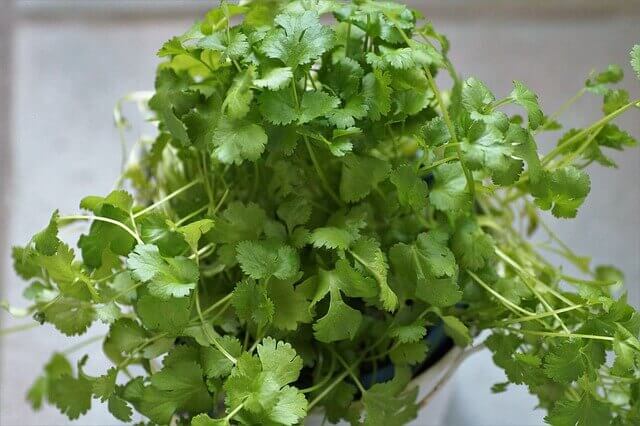55 Fun Facts About Cilantro (with Photos, ID & Info)
Do you love to cook with cilantro? If so, then this article is for you! In this article, we explore 55 fun facts about cilantro. You’ll learn what it looks like, how it tastes and smells, as well as its nutritional benefits. This information will help you better understand the versatile herb and make more informed decisions when cooking or purchasing food.
Table of Contents
Overview
- Kingdom: Plantae
- Clade: Tracheophytes
- Clade: Angiosperms
- Clade: Eudicots
- Clade: Asterids
- Order: Apiales
- Family: Apiaceae
- Genus: Coriandrum
- Species: C. sativum
- Binomial Name: Coriandrum sativum
- Scientific Name: Coriandrum sativum
- Common Name: Cilantro, Coriander, Chinese parsley.
- Native Area: Mediterranean, Middle East, Northern Africa, Southwestern Asia.
- Plant Type: Annual herb (self-seeding)
- Flower Color: Small clusters of whitish-pink flowers.
- Propagation: Seed, cuttings, layering, and division.
- Plant Height: 18-24″ inches (1.5-2.0 feet)
- Plant Spread: 12-18″ inches. (1.0-1.5 feet)
- Hardiness Zones: 2 to 11
- Bloom Time: Late spring, early summer.
- Harvest Period: est. 45-70 days. (from seed).
- Sun Exposure: Full or Partial Sun
- Soil Type: Rich, loamy, well-drained soil.
- Soil pH: 6.5–7.5
Plant Description
Cilantro plants are annuals and come in broad lobed green leaves that vary in shape with white or pale pink flowers. Cilantro plants grow vigorously during the spring and summer, reaching up to two feet high by the end of summer. They do best in full sun or light shade, though they will tolerate partial shade as well, and it is even possible to grow them indoors.
Fun Facts About Cilantro
- Coriandrum sativum is known as either coriander or cilantro.
- Cilantro is also known as Chinese parsley, fresh coriander, Indian parsley, sea parsley.
- Cilantro originally comes from the Mediterranean, Middle East, Northern Africa, Southwestern Asia.
- It is the only member of the Umbelliferae family not used for its roots.
- Cilantro helps combat Salmonella infections by inhibiting bacteria growth in the gut.
- The Active ingredient for cilantro is the Chemical compound Coriandrum Sativum “Coriander” whose uses are primarily as a spice for flavoring food products.
- Cilantro’s leaves are also made into a herbal tea that has been used traditionally to treat coughs and colds.
- The roots of Coriander can be used to make medicines or teas.
- Both seeds and leaves are edible, but the seeds “are used to flavor certain dishes like chilies, pickles, and curries while the leaves are used in the food industry for cooking.”
- According to chefs, cilantro should not be eaten raw because its flavor is too strong.
- The stem should only be eaten when it is young and tender (needing consumption of 4-6 months).
- Cilantro has health benefits helpful in treating colds. Coriander helps to reduce inflammation of the respiratory tract, clears toxins, and has natural antibacterial properties.
- Throughout Chinese history, cilantro has been used as a medicinal herb to treat digestive problems.
- Cilantro is an annual herb plant that produces flowers known as umbels, which are fern-like.
- Cilantro usually grows in damp areas near water sources.
- It is often used as a culinary herb due to its distinct taste which is slightly bitter, similar to parsley.
- Cilantro pairs well with meats, especially with seafood.

- The leaves of cilantro are very aromatic and have a fresh flavor reminiscent of citrus or pepper leaves.
- The leaves also provide the distinct flavor found in many Mexican foods.
- Cilantro can be used in a variety of South Asian and Middle Eastern cuisines.
- Cilantro is rich in vitamin K, vitamin A, and iron.
- Other nutrients include Magnesium and Manganese.
- Cilantro contains essential oils such as Thymol and Carvacrol. These essential oils give cilantro its distinctive aroma and flavor.
- The seeds of cilantro are rich in protein, fiber, and fatty acids which makes them a nutritious addition to meals or snacks. The proteins found in the seeds help build muscles while fiber helps with digestion. This makes cilantro seeds a healthier alternative to other seed snacks like chips or popcorn.
- Some studies suggest it is more powerful than green tea and inhibits the growth of such bacteria as E. coli and Salmonella.
- The ancient Egyptians soaked their bread in cilantro, but the ancient Greeks used sage to flavor their bread instead.
- The “coriander” in the name of the herb is likely derived from the Latin word “Coriandrum” which in turn is derived from the Greek “korisandron”.
- Although cilantro may be associated by some people with soap, this might be due to its association with the soap-like scents of tropical fruits like mango and pineapple.
- Cilantro is a fresh herb that tastes like a mix of lemon and pepper.
- You can find cilantro in Middle Eastern cuisine often used to make tabbouleh salad; Mexican dishes like salsas or guacamole; South American salsa de jitomate or guacamole; Asian dishes like salsa negra, guacamole with rice noodles.
- It has been touted as an aphrodisiac because it contains the essential oils geraniol and linalool which can stimulate arousal by boosting blood flow to the genitals.
- Some people find cilantro too strong for their taste buds or they experience heartburn after eating it due to its high content of peroxide compounds.
- Cilantro tastes like soap to some people because it contains the chemical compounds of anethole and myristicin which have an aroma similar to soapy detergents.
Related Post: How to Grow Cilantro from Seeds
Frequently Asked Questions
How did cilantro get its name?
Cilantro is a herb that has been used for thousands of years, and its name came from the Greek word “koris”, meaning a “stink bug,” because of the plant’s strong smell it emits. The ancient Greeks would use cilantro as an insect repellent because it was so pungent.
What is baby cilantro called?
Baby cilantro is called Chinese parsley. Baby cilantro, also known as Chinese parsley, is the tender leaves of the coriander plant. They are most often used in Asian cooking, and they have a more delicate flavor than mature leaves which are often used in Mexican dishes.
What is cilantro used for?
Cilantro has been used for centuries in cooking. The leaves are often chopped and added to sauces, salads, rice dishes, soups, sandwiches or wraps. Cilantro seeds are also popular for use in salsas and curries, as well as to treat certain ailments such as fever, headaches, stomach pain and other things.
Is cilantro good to lose weight?
Cilantro is good for weight loss because it has an antioxidant called ursolic acid that stimulates the body’s production of bile acids, which help you lose weight by increasing fat breakdown and reducing food intake. Cilantro contains more than double the amount of antioxidants found in most vegetables.
Why does cilantro taste gross?
Some people say that cilantro tastes like soap. It turns out that the culprit is a type of organic compound called aliphatic aldehydes, which can be found in soaps and many other common household products.









